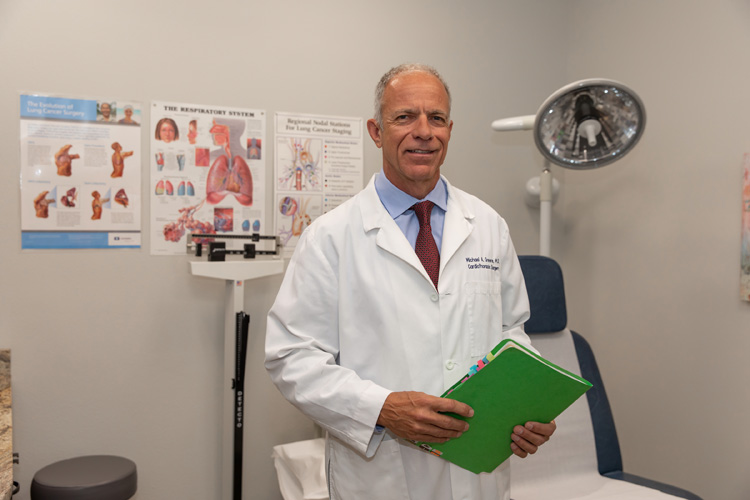
Lung cancer is the most common cause of cancer-related death in the U.S. and worldwide, according to the U.S. National Library of Medicine at the National Institutes of Health.
It is responsible for more deaths than colon, breast, ovarian and prostate cancers combined.
In Florida alone, some 12,000 will die from lung cancer this year.
Yet despite years of incredibly expensive research and a seemingly endless stream of new cancer drugs being introduced to fight the disease, the five-year survival rate for lung cancer patients remains depressingly low – just 16 percent.
Dr. Michael Greene, a thoracic surgeon at Steward Health’s Sebastian River Medical Center, hopes a new generation thoracic navigation system by Veran Medical Technologies may help turn those survival rates around.
The Veran system, says Greene, “has changed the way that spots in the lung are targeted and accessed for biopsy purposes,” and in some cases it allows him and his team to immediately treat – or remove – cancer cells found inside the lungs.
That’s not an easy thing to do given that the lungs are constantly moving, which makes them very difficult organs to navigate.
“Most of the areas in the lung that we’re targeting to do the biopsy on are something suspicious that’s been seen on a CAT scan,” Green explains. “It can be nodules that are about a centimeter in diameter, about the size of a marble. And the problem with trying to biopsy something like that is the respiratory variation – the nodules move as the lung moves in the chest. If you have a spot that’s only a centimeter in diameter and it’s going up and down, it’s a moving target.”
The beauty of the new Veran system, according to Greene, is “the computer algorithm pairs the patient’s image [as] seen on the CAT scan with their respiratory variation. So when we’re doing the biopsy, which is all done looking at a TV monitor, we’re looking at a 3-D rendition of what the spot looks like in the lung and navigating out to that with a biopsy instrument.
“As the patient is breathing, the computer generates a variation in the 3-D image so that the target looks like it is still, so we know where the spot’s going to be when the lungs are empty or the lungs are full.”
This has, according to Greene, vastly improved the success rate of lung biopsies – the removal of cells or tissues for examination by a pathologist – from about 45 percent to a whopping 80 percent to 90 percent.
Better still, says Greene, who also is the president of the Sebastian hospital’s medical staff, “one feature of this new system that the old system did not have is that if we’re unable to do a biopsy bronchoscopically – through a scope – we can do a percutaneous biopsy from the outside using the same targeted system.” In a percutaneous biopsy, a needle is pushed in through skin and lung tissue to reach the suspected cancer.
That not only saves time – and potentially having the patient come back for another procedure several days later – it can facilitate near-instant treatment if cancer is found.
“We always have a pathologist on standby looking at the tissue [samples] immediately under a microscope,” Greene says. “So, in a patient that we diagnose cancer, we can then proceed and have surgery to remove it.”
Greene goes on to praise the variety of biopsy tools included in the Veran system which, he states, “weren’t available previously,” and then adds that the new system can be used for more than lungs.
“If we find that the patient has abnormal lymph nodes [based on a PET scan or a CT scan], we’ll pair the navigational bronchoscopy with an endo-bronchial ultrasound where we can use a different scope to bounce sound waves through the walls of the bronchus and trachea and find the lymph nodes and sample them to see if there’s been any spread.”
“We can then determine,” Greene continues, “if they are they an appropriate candidate for a resection, or if they should be treated with radiation or chemotherapy. If they’re in an advanced stage, while they’re still in the operating room, we’ll put an infusaport catheter in so they can start on the chemotherapy immediately.”
Depending on the pathologist’s report and the type and extent of any cancer found, the Veran system can also be used to administer precise radiation treatment.
Whether bronchial navigation systems such as this will improve that 16 percent five-year survival rate for lung cancer patients is, as yet, unknown.
But Greene is clearly optimistic.
Dr. Michael Greene is with the Steward Medical Group and the Sebastian River Medical Center. His office is at 816 U.S. 1, Sebastian. The phone is 772-581-5848.



